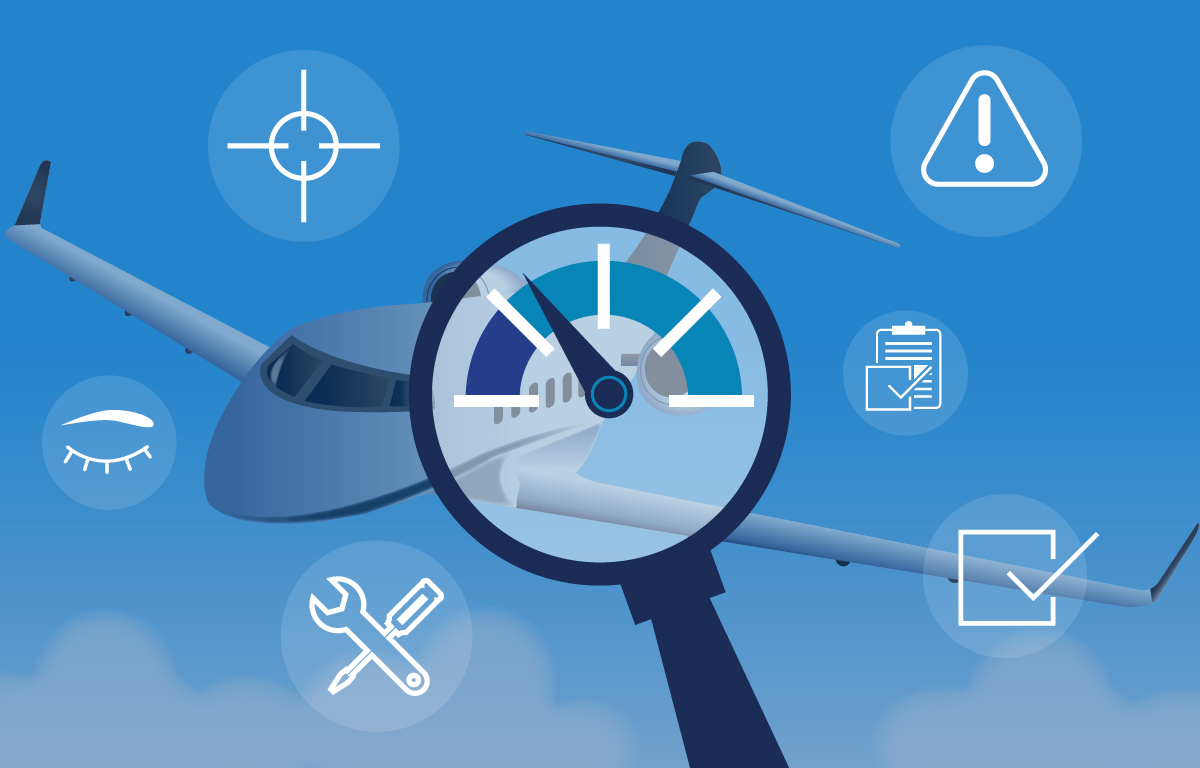Change Management goes beyond dress code policies, onboarding new employees or simply implementing new procedures – especially in aviation. So how do you ensure your flight operations department is ready for the inevitable changes it will face in the near and/or long term? You need to have a sound change management plan in place.
What is Change Management?
Change Management is a term used to describe the process for organizations to review all aspects of a potential change, develop an action plan to implement the change, and then execute the plan while mitigating risk. The basic change management process flow should include:
- Identification and assessment of a change and associated risks
- Development of a plan to implement a change and mitigate risks
- Implementation of the plan across the department
- Review and reassess the new level of risk of the department as a whole after the change
For business aviation, managing operational changes can range from a change in equipment, to bringing maintenance in-house, to revamping your home base. Additionally, it’s not just new stuff that fosters the need for a solid change management plan. It is also critical to have a process for your team to seamlessly follow when operational changes happen to existing protocols or procedures.
Existing operational changes can include shifts in your clients’ travel profiles or an airport implementing new apron protocols. Anything that can affect your operation.
It’s Time to Make Change Easier
For many years, change management was not a focal point for most operations, but during the past two years, its importance has become more appreciated. This is due in part to more and more operators adopting a Safety Management System (SMS) and realizing that change management is an integral part of SMS.
For business aviation pilots and flight departments, adopting change management procedures can be easier than for a commercial operator, since business and general aviation operators tend to have smaller, less complex operations. That’s good news, because it means that the implementation of a change management plan can be easier and faster.
In fact, it is critical for smaller operations to adopt a change management plan early on, as it can provide a sound foundation and ultimately one less thing to have to consider when an unexpected situation arises. Smaller departments or single-pilot operators have to juggle multiple responsibilities, unlike larger flight departments that may have more staff to whom they can distribute operational responsibilities. This makes having a change management system all the more important. But this doesn’t mean larger flight departments should neglect change management planning. They can also benefit from effective change management in order to help streamline the dissemination of procedural changes throughout the various departments.
In general, there is a growing list of drivers that can increase the need for proper change management. Whereas personnel changes, such as new hires, role changes or loss of personnel along with aircraft changes were often the traditional focus of change management, as flight departments formalize, new factors have become equally important. Changes to flight profiles, a change of base or hangar, any changes at familiar airport destinations, changes with maintenance, changes with scheduling / administrative software, changes to passengers, new passengers, pets, children, cargo, etc. can all trigger a need for an effective change management process.
How to Start the Change Management Process
Operational changes will often go deeper than just superficial procedural alterations. They may impact everyone in your department along with your Safety Management System (SMS), Operations Manuals, procedures, and risk profiles. There is a lot to consider during the first step of the process. Here are a few questions you can start with:
- What is the nature of the change itself? Is this an isolated, one-off or broad, systemic change?
- What are the possible risks/hazards associated with the change?
- Will it impact training or other administrative tasks?
- Will there be any impact to your hangar environment or ground handling operations?
- What effects will the change have on scheduling and dispatching?
- Will it affect restrictions on duties or duty times?
- What operating, personnel, or pilot experience restrictions should be considered? (regulatory and company imposed)
- Are there new regulatory requirements that the department needs to be made aware of (including State of Registry, State of Operations, and local governing bodies)?
- Will the change affect your passengers?
- How will your team feel about the change?
Establishing a change management procedure will give your team and fellow managers a solid framework for making change easier to implement. A little bit of planning can save a lot of grief and potential risk introduction later on.
Have questions or need help with change management? AviationManuals can provide you with a process and web based form that easily guides you through the different steps you have to take every time change happens. Contact our experts today.



